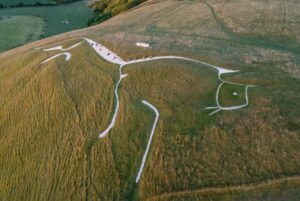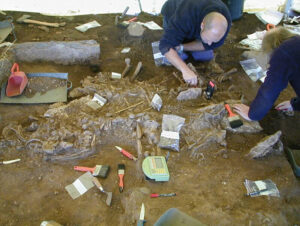A passion for the natural world drives many of our adventures. And when we’re not outside, we love delving into discoveries about the places we live and travel. Here are some of the best natural history links we’ve found this week.
NASA now bounces spacecraft off the atmosphere: An essential part of sending people to space is bringing them back to Earth. Incoming capsules exit space at thousands of kilometres per hour, and the friction as a capsule passes through the atmosphere causes scorching heat.
This week, NASA’s Orion capsule successfully landed in the Pacific Ocean. It launched last month as part of the Artemis program that hopes to send astronauts to the moon for the second time in 50 years. There were no people on Orion this time, but it proved that they can bring astronauts home successfully.
During re-entry, NASA achieved something that they have long aimed for. The capsule did not just crash into the atmosphere. Instead, it bounced across it like a skipping stone. This re-entry method is more efficient. NASA has scheduled the Artemis program’s first crewed mission for 2024.
An overlooked part of female snake anatomy
Snakes have clitorises: Snake penises are forked, spiny structures. They have been extensively studied and are the basis for much of our knowledge of snake reproduction. Female snake genitalia has been little studied.
Researchers have only just discovered that female snakes have clitorises. Scientist Megan Folwell decided it made no sense that mammals, lizards, and some birds had clitorises, but snakes did not. She began dissecting female snake specimens to try and find one. After looking under the skin of a death adder she saw a hemiclitoris, a two-part clitoris that you also find in lizards.
“This discovery could really change how we understand mating in snakes. It just shows how much we’ve been missing by largely ignoring female anatomy,” genital morphologist Patricia Brennan said.

Paleontologists discover an elasmosaurus in Australia. Photo: ABC/Queensland Museum
Complete plesiosaur skeleton found in the outback: Palaeontologists have discovered a complete elasmosaurus fossil in the Australian Outback of Queensland.
The elasmosaurus is a type of plesiosaur, an ancient marine reptile. It is the first one found in Australia. The 100-million-year-old fossil has the long, giraffe-like neck and flippers of the ancient reptile. The specimen is six metres long.
“It was absolutely phenomenal…Until you see them, you don’t realize just how big plesiosaurs can be,” paleontologist Christina Chiotakis said.
Though they lived in the sea, plesiosaurs evolved from land animals and so had no gills. Scientists are trying to discover how long they could stay underwater without having to resurface.
The Outback was an inland sea in the Cretaceous period.
Some regions are even cooling
Some parts of the Earth are warming more slowly: Most news articles focus on regions of the world that are warming rapidly. But there are several places that are warming more slowly than the 20th century average of 1.1°C.
Typically, these places are next to places that warm quickly. While western Antarctica is one of the fastest warming places, eastern Antarctica is the opposite. Some areas in that region have even cooled slightly. Scientists theorize that the hole in the ozone has made it harder for polar air to escape.
Similarly, it is well-known that ice is melting in Greenland, but the cool water from the ice means a small section of the North Atlantic is getting colder. This is mirrored in the Southern Ocean, where some areas are cooling as ice sheets collapse in Antarctica. A third area that is warming at a much-reduced rate is India, where air pollution is blocking direct sunlight.

Cinnamon-colored Black bears. Photo: Live Science/Fluid Media Factory
American cinnamon bears
American black bears are evolving to have cinnamon fur: In the western United States, some black bears are evolving to have cinnamon-colored fur.
The phenomenon is similar to that of albinism in humans: A genetic variant causes this color change. A mutation in the gene TYRP1 has led to a change in the fur’s pigmentation. Although this is a relatively young mutation, scientists can trace it back 9,360 years. The mutation has not spread to other regions of America, and biologist Emily Puckett believes this is because “it hasn’t had enough time for natural migration”.
Scientists are now trying to decipher if this shade of fur provides any selective advantage.






